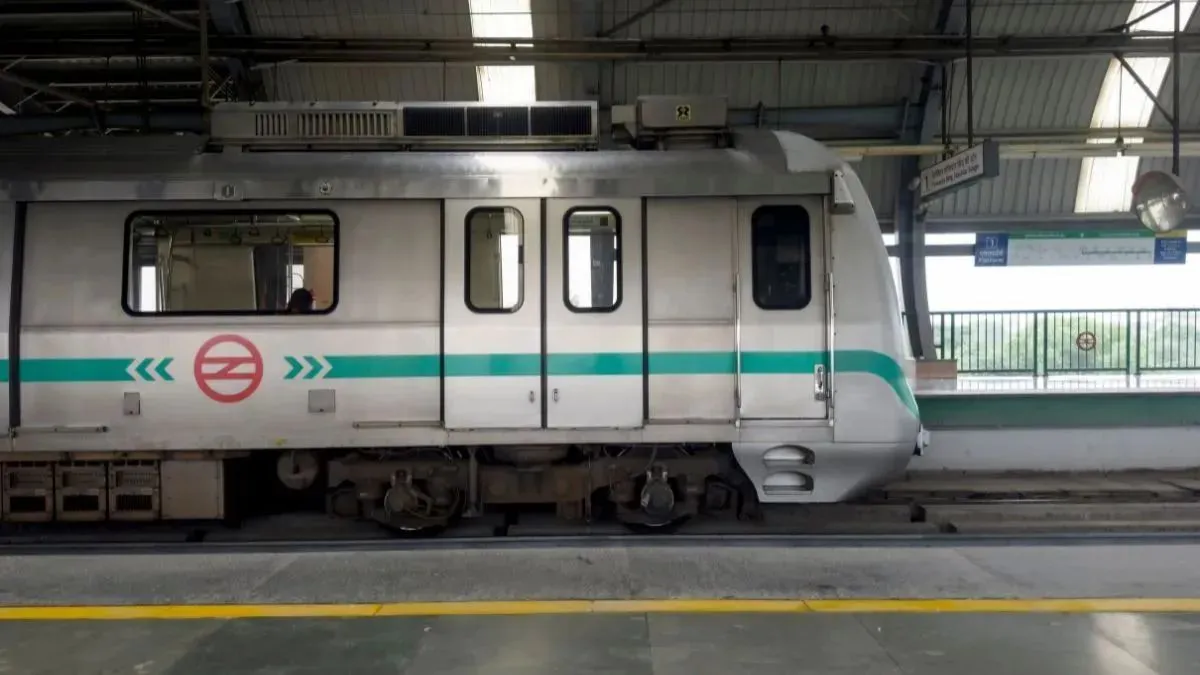- By Shibra Siddiqui
- Wed, 30 Apr 2025 03:06 PM (IST)
- Source:JND
DMRC New Metro Lines: The Supreme Court of India on Tuesday permitted the construction on Phase 4 of the Delhi Metro after the Delhi Metro Rail Corporation (DMRC) agreed to ‘strictly abide’ by the environmental conditions set by the Central Empowered Committee (CEC), appointed by the top court.
The construction of Delhi Metro Phase 4 corridors from Inderlok to Indraprastha and from Lajpat Nagar to Saket G Block is to take place in the ecologically sensitive morphological ridge area. The apex court had formed the CEC committee to ensure that the environment is not damaged. The CEC has set up 10 conditions underlining the need to safeguard trees, the CEC report revealed. According to the report, dated April 25, the fourth phase of metro construction will cover 28,685 square metres of protected area, including parts near Jhandewalan and Pushpa Bhawan.
Earlier, the bench had asked CEC to examine the DMRC’s request for permission to undertake the work.
Among the two proposed corridors, the first one affects around 20,915 square metres of ridge-like land and 122 trees. The second corridor is required to undergo a design revision, following which it will use 7,770 square metres and avoid felling any trees, requiring only the pruning of six.
Solicitor General Tushar Mehta, representing DMRC, on Tuesday informed the bench comprising Justices Br Gavai and AG Masih that DMRC will follow all the guidelines set by CEC.
ALSO READ: Pune News: Grassland Fire Damages 7 Power Lines, Talwade, Dehugaon Suffers Outage; Details
As per the Supreme Court-appointed Central Empowered Committee (CEC), the Delhi Metro Rail Corporation (DMRC) must adhere to the following conditions to continue with construction in the ecologically sensitive ridge area:
Financial Contribution: DMRC must deposit 5% of the project cost into the Ridge Management Board fund.
Compensatory Plantation: DMRC will plant 1,280 indigenous trees on non-forest land, bear the cost of compensation, and select species under the guidance of the Forest Department of GNCTD.
Mark Trees Clearly: DMRC must mark all trees to be preserved with colour bands in the presence of Forest Department officials and ensure their protection.
Follow Supervised Tree Work: DMRC must engage a specialised agency to carry out translocation, felling, and pruning of trees under Forest Department supervision.
Seek Tree Permissions: DMRC must obtain permission to fell 30 trees and transplant 92 trees for the Inderlok–Indraprastha Corridor, and to prune 6 trees for the Lajpat Nagar–Saket G Block Corridor.
Complete Interpretation Centre: DMRC may take additional time to complete the Ridge Interpretation Centre as required.
Ensure Accountability: The Ministry of Environment, Forest and Climate Change (MOEFCC) must initiate legal action against the concerned DMRC official (CP Singh) for any non-compliance.
Submit Compliance Reports: DMRC must submit quarterly compliance reports to the CEC.
Follow Court Mandates: DMRC must comply with all other conditions mandated by the Supreme Court.
Monitor and Execute Transparently: DMRC must ensure transparency and oversight by the Forest Department throughout the implementation process.
The bench stated in its order: “Solicitor General Tushar Mehta says DMRC would strictly abide by the above conditions. In that view of the matter, the application (by DMRC) is allowed. However, it is directed that the DMRC shall scrupulously comply with the conditions as imposed by the CEC.”

